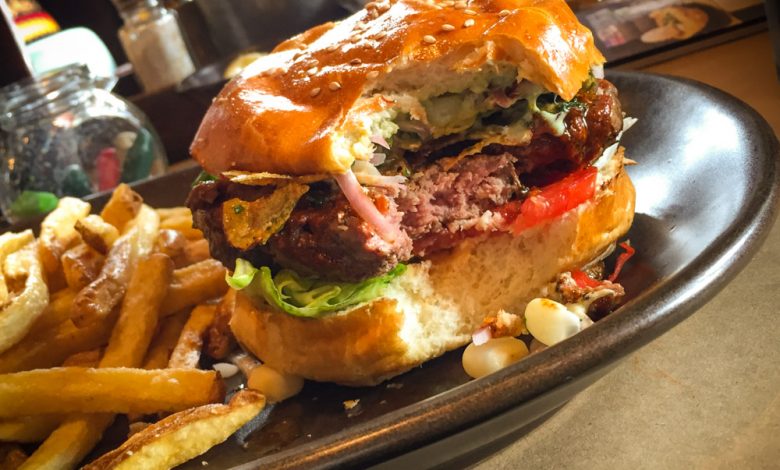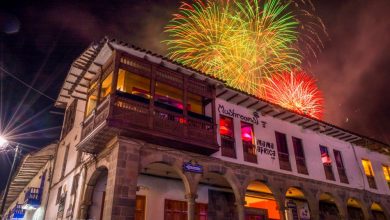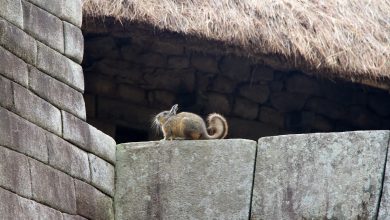Papachos Culminates the Hamburger World of Cusco

¡Delicious! (Walter Coraza Morveli)
Ah, the hamburger! That native of carnivals and chain restaurants, that product of car culture and the United States has come to Peru many times. Indeed, like the Eucalyptus trees brought from a different continent, Australia, it has almost become native.
Ok. The Peruvian rotisserie chicken pollo a la brasa, far outsells it, but, still, there is nothing like the hamburger. It trails clouds of decades of changing popular culture, from Wimpy to Big Boy and then Big Mac, diners and roadside chains with carhops and, later, drive-throughs.
In Cusco you can find an encyclopedia of hamburgers to explore or chose among for your delight.

At night, on Saphi Street sandwich vendors set up and among their wares is a simple hamburger. When I first came here in the seventies this kind of burger was very popular here and in neighboring Bolivia. It is a thin patty of ground beef on bread.
This may well be similar to the earliest of hamburgers developed in a fin de siecle United States with its massive cow-yards and burgeoning cities. There entrepreneurs adapted a chopped steak tartare called hamburger steak. They cooked it and placed it in bread. It was later that the traditional condiments joined in.

I remember how you could buy those on the streets, like you still can on Plateros by night, and how they migrated to restaurants. Elegantly dressed women and finely suited men would sit at tables with a plate of a hamburger and fries before them. They would lift their fork in their left hand, arch up, and knife in the right to delicately remove civilized, bite-sized pieces from the burger and lift them their mouths with decorum. Fork, always in the left.
After two years in Bolivia, my friends and I were so excited to arrive in Lima, a city larger than any I had ever been in to that point in my life, and find Burger King, an American Chain with its whopper. There was nothing, for us, like American, big-chain burgers
Today, in Cusco, if you want a whopper you must go to the mall, the Real Plaza between Avenida de la Cultura and Avenida Collasuyo. There you can enjoy a big-chain burger with all the dash and verve of an ordinary, old-style suburban mall. As you tear open the packets of ketchup (called kep-choop, here), along with the burst of vinegar and sweet, you can smell movie popcorn and hear the constant echo of loud, popping noise, while being surrounded by crowds.

However, not long ago, thanks to the blessings and actions of the Archbishop, the Golden Arches also came to Cusco. Located under the stone arches on the Cathedral side of the Plaza de Armas, Cuzco’s main square, you can enjoy an American Boom burger, whether a Big Mac, Quarter Pounder or what not.
You can do take out if you must, but why? Enjoy sitting in this blend of theme park and hamburger stand. While you eat you burger you can also appreciate the touches of local culture, as if McDonald’s, despite its Scottish name and California beginnings, sprang full blown from the same caves that saw the original Inca Ayar siblings come out to found the Inca Empire, one of the greatest in World History.
You can also cross to the other side of the Plaza de Armas and under the arches of the Portal de Comercio find Bembos. This chain sprang from the efforts of Peruvian entrepreneurs who wanted to seize and nationalize American fast-food and, especially, hamburger culture. Here you get a constantly shifting take on the hamburger involving local ingredients, tastes, styles and names. It is as Peruvian as the perro peruano, the hairless dog.
Nevertheless, you also see a side-ways nod and wink at Brazil where the gist of a hamburger is a massive pile of abundant and diverse ingredients, a smorgasbord in a bun. That is a Bembos Burger, a mountain of stuff, tastefully and carefully selected, on a bun with local sauces.
If you want something more home-style and American you can walk up the Cuesta de San Blas to The Meeting Place on its placita. This coffee house and English-speaking Evangelical mission offers American-style drip coffee, waffles, and hamburgers. They tried very hard to get the meat to taste right. Beef in the US is different—it is aged and differently marbled.

To this display case of hamburger history and offerings, Cusco won two more last year.
In the mall, there is Chilis, the epitome of suburban food. There you can have your Chipotle Blue Cheese Burger, your Taco Burger, or your Mushroom-Swiss Burger, as you wish, along with faux southwest food and big screen TVs nourishing you with sports.
Cusco also added on the Plaza a Papachos, Celebrity Chef Gastón Acurio’s rethinking of the burger and the diner, now dinner-bar. It is on the other side of the Cathedral, upstairs, with stupendous views of Colonial Cuzco.
I did not know what to think. Outside of Astrid and Gaston, or La Mar, I have not been particularly impressed with what I have seen of Gastón’s empire. This may just be my personal take, but they have generally felt like a Creole promise, lots of hot air and promised warmth with little completion.
Papachos proved me wrong, from entrance to sauces, main course and last bite of my dessert.
I was tickled by the life sized poster made from Martin Chambi’s Giant (Juan de la Cruz Sihuana, from Llusco, Chumbivilcas; Cuzco) and psychedelic art with an open beating heart and a very meaningful slogan that expresses so much about Gaston Acurio and his team whether they meant it to or not: Andean Power.

I ordered a Cusco Burger from a menu that included a range of fantasies, from Mustafa to Franchute and more. I thought, when in Cusco, why not. Though I was offered onion rings or a salad, I chose the basic fries, and a mystic iced tea.
My colleagues ordered an Anticucho burger, a Creole burger, porteña burger, and Papachos’ take on a bacon blue-cheese burger, the Papacha.
I do not know what I was expecting, but what we got was not it. Instead we got something really good, with amazing attention to detail.
placed bowls of sauce in front of us on the butcher paper covering the table. The server explained the first was ketchup while the other was a combination of mayonnaise, yellow aji, and a local herb, wacatay. The next was a homemade mayonnaise and then came a sauce catsup.

I couldn’t resist dipping my fork in and trying them both. The aji dipping sauce won my heart. I have tried many versions of this sauce; it may as well be considered a standard. This version raises the bar very high.
I was also tickled with the sauco catsup. Elderberries (sauco) balanced well against a bit of mustard and other ingredients for a mix of sweet and tart perfect for meat or fried foods.
Papachos has answered the meat problem by relying of veal produced in the Oxapampa area of central Peru, an area where many Germans settled. They also ground the meat coarsely which gives it texture and, along with perfect cooking, gives it flavor that will make most hamburger lovers happy.
Each one of the burgers then had topical, thematic coverings. Not only were they artistic marvels when served, they also made detailed and tasty combinations.
Papachos has claimed the hamburger and coined a verb, hamburguesear, to describe the way they take pre-existing dishes like a limo saltado or siu mai and place them on a burger to not only create a new version of Peru’s classic Creole cuisine but to also create new and scrumptious hamburgers.
Besides spell-binding views of colonial Cusco and enticing decor, Papachos offers food that will have you salivating when you read its descriptions on the menu and wanting to come back as soon as you finish your meal.





